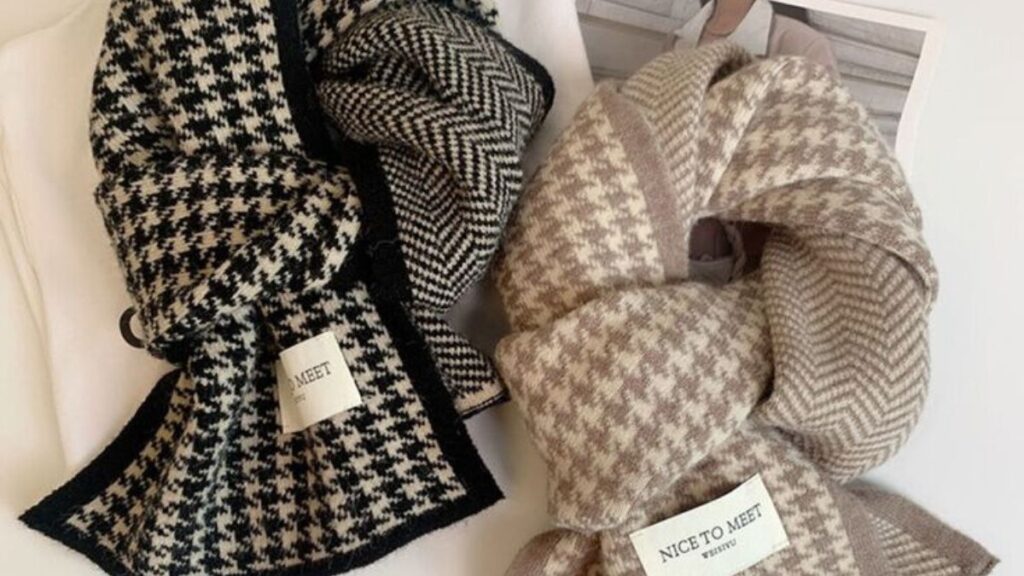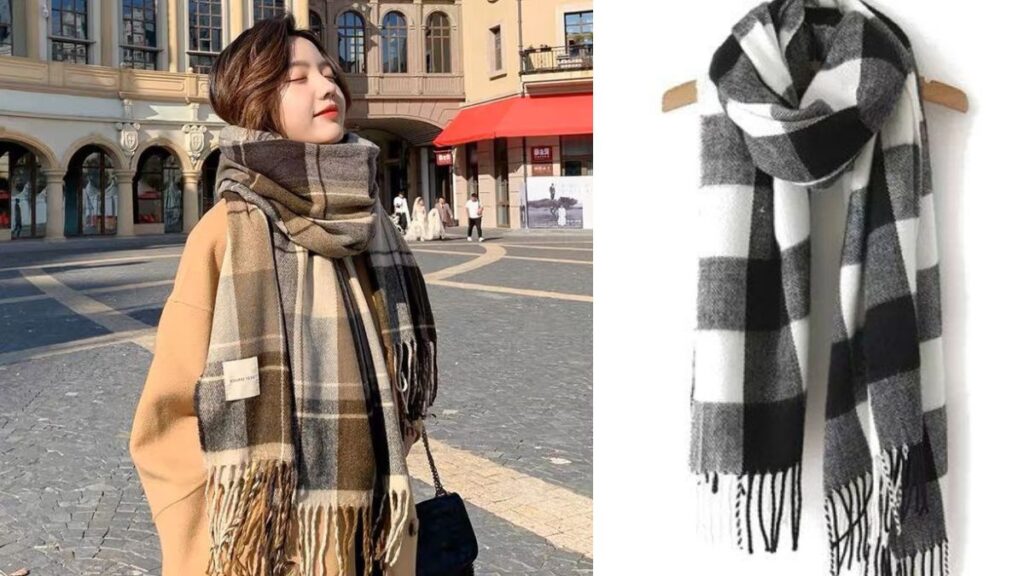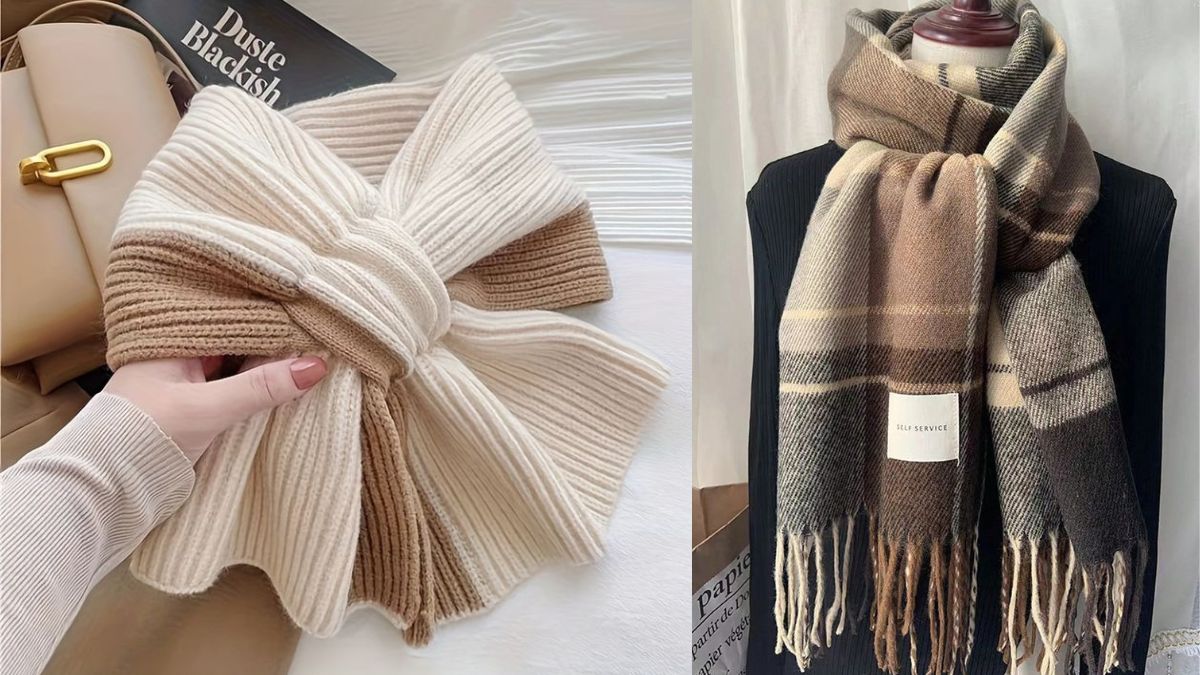Pashmina scarf have long been a symbol of luxury and elegance. Renowned for their softness, warmth, and timeless appeal, these scarves are an essential accessory for anyone looking to add a touch of sophistication to their wardrobe. Originating from the Himalayan region, pashmina has a rich history and cultural significance that makes it much more than just a piece of fabric. This article explores the world of pashmina, guiding you through its history, how to identify genuine pashmina, the art of styling, and the care it requires to ensure longevity.

1. The Origins of Pashmina scarf
Pashmina, often referred to as “soft gold,” originates from the high-altitude regions of the Himalayas, primarily in Nepal and India. The word “pashmina” comes from the Persian word “pashm,” which means “wool.” This luxurious fabric is derived from the fleece of the Changthangi goat, found in the Himalayan region at altitudes above 14,000 feet. These goats produce a fine undercoat of hair to protect themselves from the extreme cold, which is collected each spring when the goats naturally shed their winter coat.
The weaving of pashmina dates back several centuries, with records indicating its use as early as the 3rd century BC. It became popular among royalty and nobility, who cherished its unparalleled softness and warmth. The intricate weaving process, often done by skilled artisans, results in a product that is not only a piece of clothing but also a work of art.
2. Understanding the Difference Between Pashmina scarf and Cashmere
Many people use the terms “pashmina scarf” and “cashmere” interchangeably, but there are distinct differences between the two. Both come from the fleece of goats, but the primary distinction lies in the fiber’s fineness. Pashmina scarf fibers are finer than cashmere, measuring about 12-16 microns in diameter compared to cashmere’s 19 microns. This fineness contributes to the lightweight yet incredibly warm nature of pashmina.
Another difference is the region of origin. While pashmina scarf specifically refers to the wool from the Changthangi goat in the Himalayas, cashmere can come from various breeds of goats in different regions, including Mongolia and China. The luxurious feel of pashmina scarf, along with its unique history and craftsmanship, makes it highly sought after and more expensive than other types of cashmere.
3. Identifying Genuine Pashmina scarf
With the popularity of pashmina scarves, the market is flooded with imitations. It is crucial to know how to identify genuine pashmina to ensure you are investing in an authentic product. Here are some tips to help you recognize true pashmina:
- Price: Genuine pashmina is relatively expensive due to its rarity and the craftsmanship involved in its production. If a deal seems too good to be true, it probably is.
- Texture: Authentic pashmina scarf is incredibly soft and lightweight. If the scarf feels rough or heavy, it may be a blend or imitation.
- Weave: Pashmina scarf is typically handwoven, so slight irregularities in the weave are a good sign of authenticity.
- Label: Check for labels that specify “100% pashmina” or “70% pashmina/30% silk.” Be wary of labels that only say “pashmina” without further detail, as these could be misleading.
- Burn Test: Although not recommended for scarves you haven’t purchased, burning a small thread from a corner of the scarf can reveal its authenticity. Genuine pashmina smells like burnt hair and leaves a powdery ash.

4. Styling Your Pashmina Scarf
Pashmina scarves are incredibly versatile and can be styled in numerous ways to suit different occasions and outfits. Here are a few popular styling methods:
The Classic Drape
For a simple and elegant look, drape the pashmina scarf around your shoulders and let it hang loosely in front. This style works well with both formal and casual outfits.
The Loop
Fold the scarf in half and drape it around your neck. Pull the loose ends through the loop and adjust for a cozy, chic look perfect for colder weather.
The Knot
For a more structured appearance, tie the scarf around your neck and secure it with a knot. This style pairs well with blazers and tailored coats.
The Wrap
Wrap the pashmina around your shoulders and secure it with a brooch for an elegant touch. This style is ideal for formal events or evenings out.
The Shawl
Open the pashmina fully and drape it over your shoulders as a shawl. This provides extra warmth and adds a touch of luxury to your outfit.
5. Choosing the Right Pashmina scarf for You
When selecting a pashmina scarf, consider factors such as color, pattern, and size to find the perfect match for your style and needs.
Color
Pashmina scarf come in a wide array of colors, from classic neutrals to vibrant hues. Choose a color that complements your wardrobe and skin tone. Neutral colors like black, grey, and beige are versatile and can be paired with almost any outfit, while bold colors can make a statement and add a pop of color to your look.
Pattern
Pashmina scarves are available in various patterns, including solids, stripes, and intricate paisley designs. A solid-colored scarf is versatile and timeless, while a patterned scarf can add interest and texture to your outfit.
Size
Pashmina scarves come in different sizes, from small neck scarves to large shawls. Consider how you plan to wear the scarf when choosing the size. A smaller scarf is ideal for everyday wear, while a larger shawl is perfect for layering and providing warmth.

6. Caring for Your Pashmina Scarf
Proper care is essential to maintain the beauty and longevity of your pashmina scarf. Follow these tips to keep your scarf looking its best:
Washing
Pashmina should be washed by hand using cold water and a mild detergent. Gently swirl the scarf in the water and avoid wringing or twisting it. Rinse thoroughly and squeeze out excess water by pressing the scarf between two towels.
Drying
Lay the scarf flat on a clean towel to air dry. Avoid hanging it, as this can cause the fabric to stretch. Keep it away from direct sunlight and heat sources, which can damage the fibers.
Storing
Store your pashmina in a cool, dry place. Avoid hanging it for long periods, as this can cause stretching. Instead, fold the scarf neatly and place it in a breathable cotton bag or drawer.
Ironing
If necessary, iron your pashmina on a low setting with a cloth between the scarf and the iron to prevent direct contact. Steam can also be used to remove wrinkles.
7. The Cultural Significance of Pashmina
Pashmina holds great cultural significance in the regions where it is produced. In India and Nepal, pashmina weaving is a traditional craft passed down through generations. The artisans who create these beautiful scarves are highly skilled and take great pride in their work.
In Kashmir, pashmina weaving is not just a craft but a way of life. The intricate patterns and designs are often inspired by the region’s rich cultural heritage and natural beauty. Owning a pashmina is considered a status symbol and a testament to the wearer’s appreciation for fine craftsmanship and tradition.
8. Ethical and Sustainable Pashmina Production
As consumers become more conscious of the ethical and environmental impact of their purchases, the demand for sustainably produced pashmina has grown. Ethical pashmina production focuses on animal welfare, fair wages for artisans, and environmentally friendly practices.
Animal Welfare
Ethical pashmina production ensures that the goats are treated humanely and are not harmed during the collection of their fleece. The fleece is collected during the natural shedding season to minimize stress on the animals.
Fair Wages
Artisans involved in pashmina production should receive fair wages for their work. Supporting brands that prioritize fair trade practices helps ensure that these skilled workers are compensated appropriately for their craftsmanship.
Environmental Impact
Sustainable pashmina production minimizes the environmental impact by using natural dyes and reducing waste. Choosing pashmina from brands that prioritize sustainability helps support eco-friendly practices.
9. The Global Market for Pashmina
Pashmina has a significant presence in the global market, with demand increasing in recent years. Its popularity extends beyond South Asia, with fashion enthusiasts and designers worldwide recognizing its elegance and versatility. Pashmina scarves are now available in high-end boutiques and department stores, as well as online, making them accessible to a broader audience.
The growing demand for pashmina has also led to innovations in design and production. Designers are continually experimenting with new patterns, colors, and styles to appeal to a diverse range of consumers. Despite these changes, the timeless appeal of pashmina remains, making it a cherished accessory across the globe.
10. The Versatility of Pashmina in Fashion
One of the key reasons for the enduring popularity of pashmina is its versatility in fashion. Pashmina scarves can be worn in various ways, making them suitable for different occasions and styles. Whether dressed up for a formal event or dressed down for a casual outing, a pashmina scarf adds a touch of elegance and sophistication.
Seasonal Adaptability
Pashmina is an excellent choice for both cold and warm weather. Its lightweight nature makes it suitable for layering in colder months, while its breathability allows it to be worn comfortably in milder climates.
Gender-Neutral Appeal
Pashmina scarves are a gender-neutral accessory that can be worn by anyone, regardless of gender. Their timeless design and versatility make them a popular choice for both men and women.
11. The Future of Pashmina
The future of pashmina looks promising as more consumers seek high-quality, sustainable fashion options. Innovations in production and design continue to drive interest in pashmina, while ethical and sustainable practices ensure its longevity in the market.
As the fashion industry evolves, pashmina is likely to remain a staple accessory, cherished for its luxurious feel and timeless appeal. By supporting ethical brands and prioritizing sustainability, consumers can contribute to the preservation of this traditional craft for future generations.
12. Conclusion
Finding your perfect match in a pashmina scarf is an investment in timeless elegance and craftsmanship. With its rich history, cultural significance, and unmatched luxury, a pashmina scarf is more than just an accessory; it is a symbol of sophistication and style. By understanding the origins, identifying genuine pashmina, and caring for your scarf properly, you can enjoy its beauty and warmth for years to come.
As the demand for ethical and sustainable fashion grows, pashmina continues to evolve, offering new designs and innovations that cater to a diverse range of consumers. Whether you are drawn to its history, cultural significance, or simply its luxurious feel, a pashmina scarf is a valuable addition to any wardrobe.

FAQs
Q1: What is the difference between pashmina and cashmere?
Pashmina and cashmere both come from the fleece of goats, but pashmina is finer and originates from the Changthangi goat in the Himalayas. Cashmere can come from various goat breeds in different regions.
Q2: How can I tell if a pashmina scarf is genuine?
Look for signs such as price, texture, weave, and label. Authentic pashmina is soft, lightweight, and often handwoven with slight irregularities. Labels should specify “100% pashmina” or a pashmina-silk blend.
Q3: How do I care for my pashmina scarf?
Hand wash in cold water with a mild detergent, air dry flat, and store in a cool, dry place. Iron on low heat with a cloth barrier if needed.
Q4: Are pashmina scarves suitable for both men and women?
Yes, pashmina scarves are a gender-neutral accessory that can be worn by anyone. Their timeless design and versatility make them popular for both men and women.
Q5: What makes pashmina a sustainable fashion choice?
Ethical pashmina production focuses on animal welfare, fair wages, and environmentally friendly practices. Supporting sustainable brands helps ensure the longevity of this traditional craft.

Leave a Reply